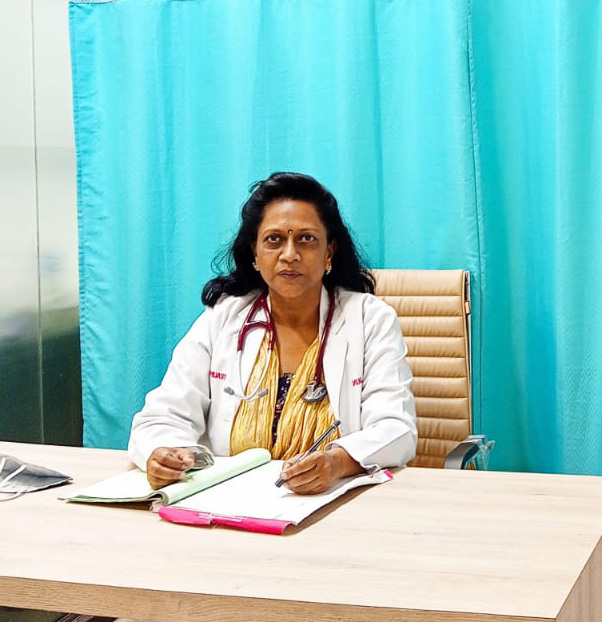There are times when we believe that our health is unshakable because we follow a strict fitness regime. Yet, life has its own way of catching us off guard. Even the fittest individuals can face sudden health scares, including heart attacks, injuries, or undetected medical conditions. Many illnesses share symptoms, making it easy to mistake one for another, leading to potential misdiagnoses.
For example, stomach pain can be brushed off as simple gas or indigestion when, in reality, it could be something more serious like appendicitis. Since both conditions can cause abdominal discomfort, how do you tell them apart? If you, too, have ever wondered whether your pain is harmless gas or a warning sign of appendicitis, Dr Amita Jain, a senior general and laparoscopic surgeon and one of the best appendicitis specialists in Delhi is here to clear all your doubts.

What is Appendicitis?
Appendicitis is a medical condition in which the appendix (a small tube- like organ attached to the large intestine) becomes inflamed or infected. The human appendix, previously thought to be a vestigial or evolutionary remnant has been found to play a significant role in the digestive and immune systems according to recent studies.
Despite its useful functions in the body, removal of the infected appendix is recommended by doctors as untreated appendicitis can be fatal. Furthermore, its removal is not harmful for the human body.
What does Gas Pain Feel Like?
Have you ever experienced a sudden, sharp pain in your belly, like it’s stretching from the inside? That could be gas pain! It happens when excess air builds up in your stomach and intestines. This trapped gas causes bloating, discomfort, and cramps. Your body releases it by burping or passing gas.
Symptoms of Appendicitis Vs Symptoms of Gas Pain
Location: Appendicitis typically begins with discomfort near the belly button before shifting to the lower right abdomen. In contrast, gas pain can occur anywhere in the abdomen, including the chest, and usually fluctuates in intensity.
Kind Of Pain
In case of appendicitis, the pain worsens rapidly, often within hours, and intensifies with movement, coughing, or deep breathing. It is sharp, constant, and progressively severe. In contrast, gas pain fluctuates in intensity, comes in waves, and eases once gas moves or is released. While gas pain can sometimes feel sharp, it typically improves after passing gas.
Appendicitis pain Vs Gas Pain: Symptoms in Children and during Pregnancy
Common symptoms of Appendicitis in children
Appendicitis can occur at any age, but it is most common between 10 and 20 years old.
Sharp stomach pain
Walking bent over at the waist
Lying on their side with knees drawn upward
Nausea and vomiting
Abdominal tenderness when touched
Common Symptoms of Appendicitis during pregnancy (though rare)
Symptoms are similar to non-pregnant individuals.
The appendix sits higher due to the growing baby shifting the intestines.
Pain may be felt higher up on the right side of the abdomen.
-A ruptured appendix can be dangerous for both the parent and baby.
Common symptoms of gas pain in children
Symptoms include abdominal pain, bloating, frequent burping, and flatulence.
Pain is often described as cramping or a knotted feeling in the belly.
Some children may also experience nausea.
Common symptoms of gas pain during Pregnancy
Can cause severe abdominal pain, which may stay in one area or move throughout the belly, back, and chest.
Increased progesterone levels relax intestinal muscles, slowing digestion.
Food stays in the colon longer, leading to more gas buildup.
As pregnancy progresses, the growing uterus puts pressure on organs, further slowing digestion and increasing gas accumulation.
Other Symptoms
For Appendicitis:
Fever
Nausea
Vomiting
Inability to pass gas
Constipation (hard stools)
Diarrhea (loose stools)
Distended (swollen) belly
Lack of appetite
For Gas Pain:
Belching
Flatulence
Mild Discomfort
Doctor’s Diagnosis for Appendicitis Vs Gas Pain
When in doubt, consult a doctor. Here’s how medical professionals distinguish between gas pain and appendicitis in a clinical setting:
- Physical Examination: Doctors apply pressure to specific areas of the abdomen, particularly McBurney’s Point (lower right side), to check for rebound tenderness—a key sign of appendicitis.
- Blood Tests: Elevated white blood cell counts indicate an infection, which is often associated with appendicitis.
- Imaging: Ultrasound or CT scans help confirm whether the appendix is inflamed or if the discomfort is simply due to gas buildup.
Finally, while gas pain is usually harmless and resolves on its own, appendicitis requires urgent medical attention. Recognizing the differences—sharp, worsening pain for appendicitis versus fluctuating discomfort for gas—can prevent complications. Make it a point to seek medical advice, as timely diagnosis can be lifesaving. Stay informed, listen to your body, and act accordingly.

Dr Amita Jain is a surgeon with the highest degree of professional competence, precision and surgical craftsmanship. Performed all complicated general surgery procedures with in depth knowledge of invasive and few minimal invasive and onco surgical techniques. Underwent special training in trauma, executed various trauma-related complex life-saving neurosurgical procedures, reconstructed injured mangled limbs and performed vascular and reconstructive procedures with critical care.
Dr Amita Jain holds 28 plus years of rich experience in Trauma and General Laparoscopic Surgeries (including Gallbladder stone removal, appendix removal, hernia repair surgery, piles and fissure surgeries). She was the Professor Surgery of at the Army College of Medical Sciences and Base Hospital Delhi Cantt. In 1994 she was commissioned as Surgeon under the United Nations Mission in Congo. From 2020 to 2022, she worked with Bansals Hospital. Currently, Dr Amita Jain is the Sr. General and Laparoscopic Surgeon at Rainbow Children Hospitals, Malviya Nagar, Delhi.
